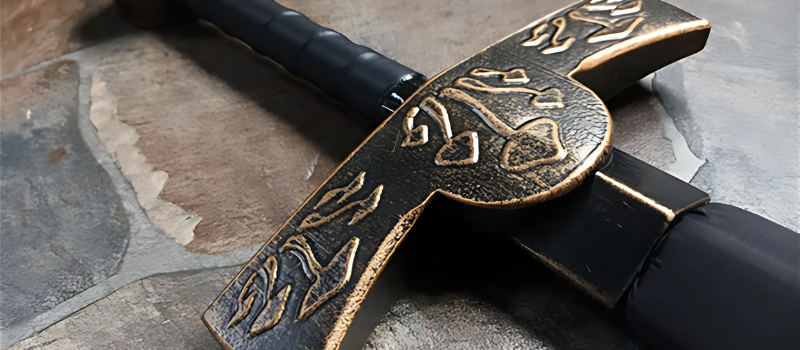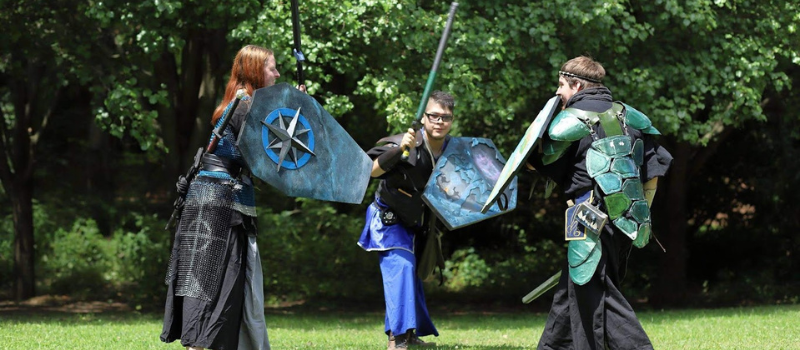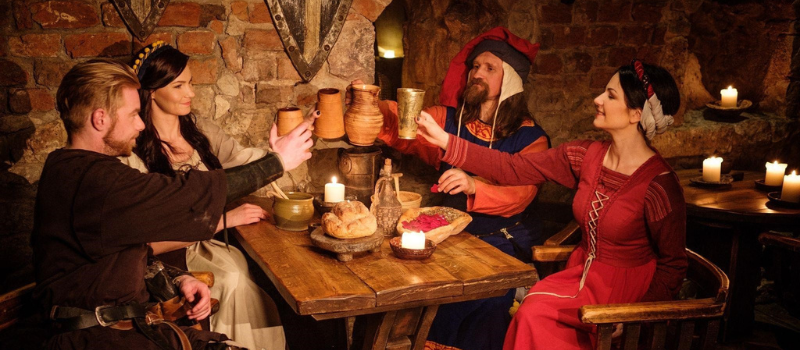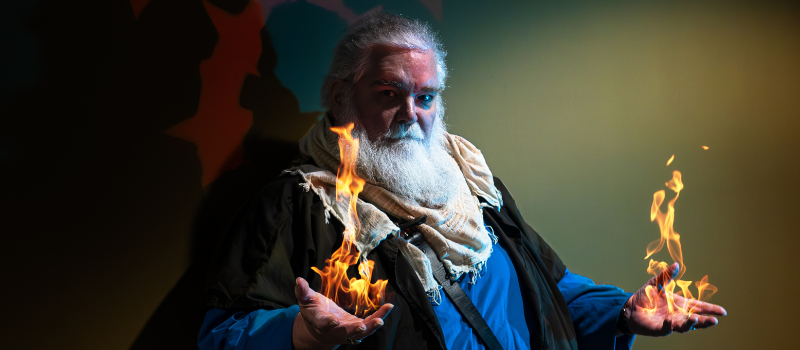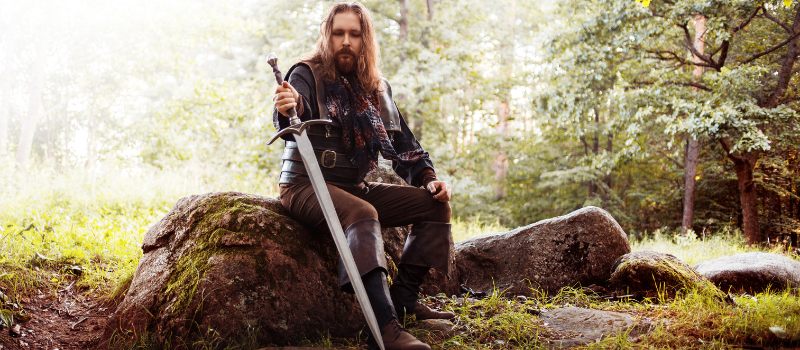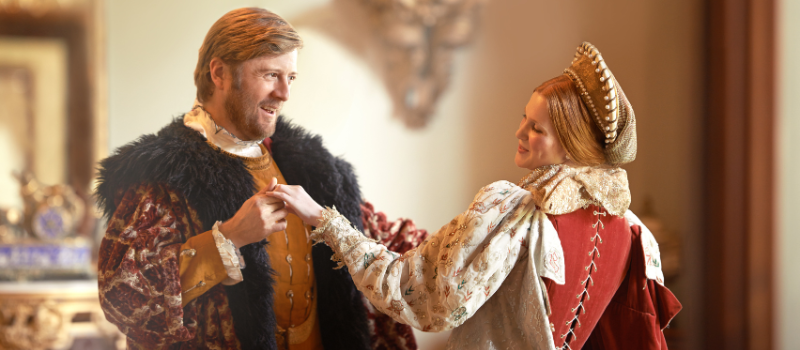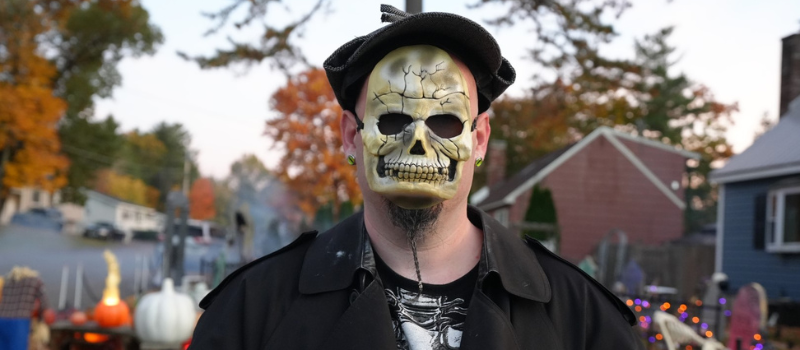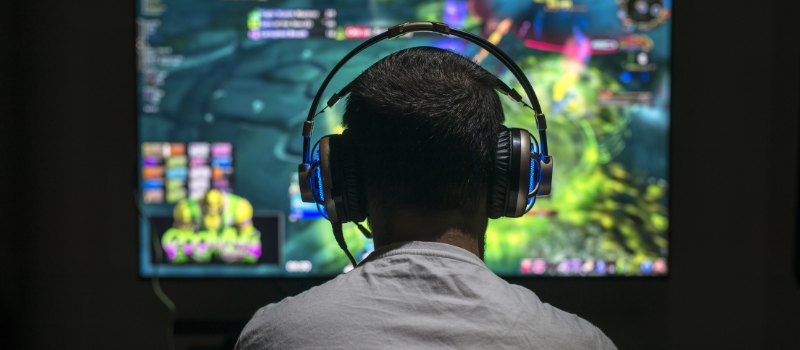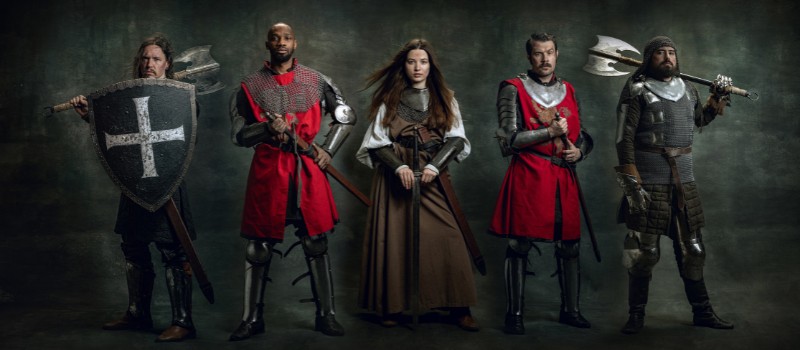The 5 Tiers of LARP Combat, a guide to LARP Fighting
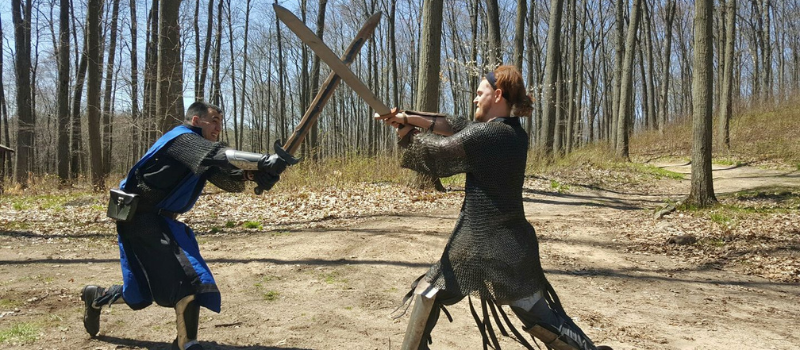
Happy New Year to all my fellow LARPers. It's that time of year when many are either reveling in the new LARP weapons they have purchased for themselves for the upcoming season - or even better - a loved one has purchased for us as a Christmas gift. I personally got a great new pair of leather boots. As we all prepare for a new season of LARP and the anticipated LARP Fighting or LARP Combat, I thought it would be timely to write about the various types of fighting or combat that exist in LARPs.
While I have had a long career as a LARPer, I am not generally a fighter, so I reached out to Dan Comstock, a fellow veteran LARPer who I know from my early days of Live Action Role Play in NERO and most recently in 2022 where I built and managed the Limbus experience for him at the first Drachenfest event held here in the USA. Dan has extensive LARP experience across many genres, games, and even continents and I am grateful for his friendship and help in gathering this info to share.
There Are 5 LARP Combat Tiers
LARPs can be categorized by the quantity and type of combat in which players engage during events. Is heavy combat the sole purpose of an event? Or is it a more strategic part or a plotline and more theatrical? What type of weapons are used? Are they padded weapons, foam weapons, ranged weapons, heavy weapons (make sure you have real heavy armor to match)? LARP fighting can be categorized into 5 tiers by comparing the levels of ATHLETICS and physicality required against more game mechanics, role play or THEATRICS.
Note: Even though I’ve placed games firmly in a type, it doesn’t mean it’s 100% in that type. It may have elements of the other types but tends to be most strongly in that type.
Pure Athletics
 On the deep end of the pool, where LARP combat is mostly about physical skill, are the "Battle Game" systems: Belegarth & Dagohir. These systems use weapons with heavy padding because a lot of force is used in the swing. Hits don't "count" unless delivered with "sufficient force". These games tend to have very jovial, festive atmospheres, and generally have no plot other than "we fight all day and party at night".
On the deep end of the pool, where LARP combat is mostly about physical skill, are the "Battle Game" systems: Belegarth & Dagohir. These systems use weapons with heavy padding because a lot of force is used in the swing. Hits don't "count" unless delivered with "sufficient force". These games tend to have very jovial, festive atmospheres, and generally have no plot other than "we fight all day and party at night".
Athletics
 Amtgard, Darkon, and Biccoline are good examples of the next combat tier. These are games with a little bit of fantasy involved, but the LARP elements are basically just a premise so combat can exist. In these games, the plot mostly aims at house rivalries, and faction-based politics, and the physical contact with weapons tends to be a bit lighter. Amtgard and Darkon have fantasy character classes like Druid or Ranger, but one doesn’t get a sense that there's a lot of class-related roleplay. Within Amtgard, there seems to be debate about whether it's a LARP or not, and to what degree the game should aim at traditional LARP & story experiences vs festival party experiences.
Amtgard, Darkon, and Biccoline are good examples of the next combat tier. These are games with a little bit of fantasy involved, but the LARP elements are basically just a premise so combat can exist. In these games, the plot mostly aims at house rivalries, and faction-based politics, and the physical contact with weapons tends to be a bit lighter. Amtgard and Darkon have fantasy character classes like Druid or Ranger, but one doesn’t get a sense that there's a lot of class-related roleplay. Within Amtgard, there seems to be debate about whether it's a LARP or not, and to what degree the game should aim at traditional LARP & story experiences vs festival party experiences.
Combination of Athletics & Theatrical
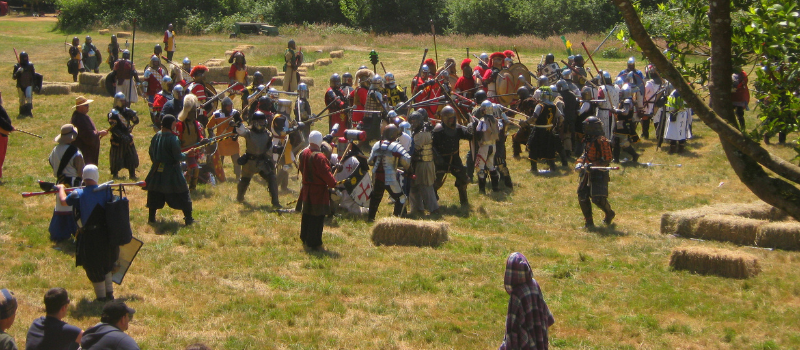
 In the next tier, the games are "story" focused and combat is more of a side dish, rather than the main course. There is still a physical nature in combat systems of NERO and Accelerant LARP games which tend to create a team-sport-like vibe. Players do productive group problem-solving in a live environment. There are options for people who aren't very athletic (magic casting, healing, bardic performances, etc.), and a skill system mitigates some of the physical demands, but the combat system is still mainly about training your physical body to be good at fast swordplay or hitting people with spell packets. These systems are entirely "light touch" combat, and tend to feature abstractions, like damage calls and more complex rules.
In the next tier, the games are "story" focused and combat is more of a side dish, rather than the main course. There is still a physical nature in combat systems of NERO and Accelerant LARP games which tend to create a team-sport-like vibe. Players do productive group problem-solving in a live environment. There are options for people who aren't very athletic (magic casting, healing, bardic performances, etc.), and a skill system mitigates some of the physical demands, but the combat system is still mainly about training your physical body to be good at fast swordplay or hitting people with spell packets. These systems are entirely "light touch" combat, and tend to feature abstractions, like damage calls and more complex rules.
For example, Madrigal, an Accelerant LARP, has 50+ game effects, each of which has a specific definition. These mechanics represent a problem-solving element (hit the fire elemental with ice, etc.) which adds some intellectual puzzle to combat. I'll also note that this tier is the closest to D&D and other table top gaming systems, and therefore tends to be focused on PC vs NPC conflicts, where the PCs are fighting monsters or antagonists, which are tough by virtue of stats or other game mechanics.
Because of the complexity of rules, this is also the tier that LARP Portal was primarily built to support. Whether it is a PC class of Fighter, a series of fighter abilities, or weapons and armor that a player can purchase as they build their character, it is obvious from the high percentage of our LARP Portal character base that has one or more fighter skills and or weapons, Combat is a major draw for many LARPers.
Live Theatrical
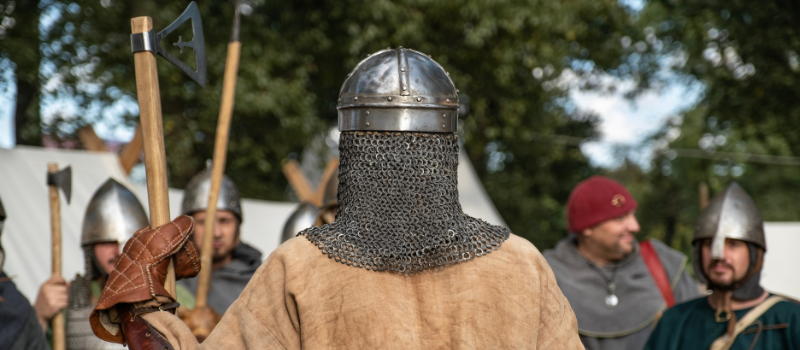
 On the next tier, you've got live theatrical LARP combat. These systems aim to create an action movie vibe without the corresponding physical demands. Generally, these types of games tend to reject the more mechanical approaches to combat simulation in favor of visual immersion and in-scene verisimilitude. That is, if I hit you in the chest with a big club, your mission is to react as if you got hit in the chest with a big club. Often, the mechanics can be dropped or ignored in favor of the "appropriate reaction".
On the next tier, you've got live theatrical LARP combat. These systems aim to create an action movie vibe without the corresponding physical demands. Generally, these types of games tend to reject the more mechanical approaches to combat simulation in favor of visual immersion and in-scene verisimilitude. That is, if I hit you in the chest with a big club, your mission is to react as if you got hit in the chest with a big club. Often, the mechanics can be dropped or ignored in favor of the "appropriate reaction".
In the theatrical combat space, the rules tend to get lighter again; crunchy mechanics are at odds with internal immersion and spontaneous roleplay. In the previous tiers, everybody is trying their best to win (except, maybe, the NPCs in crunchy games). In the theatrical LARP space, combat is approached more collaboratively; we’re cooperating to create a cool-looking scene. If you perform as a big strong guy, I'm going to react accordingly, even though it gives me a personal disadvantage.
Pure Theatrics

 And finally, in the last tier, you've got pure theatrical combat without physical requirements. In these games, combat is entirely abstract, often being resolved by some game mechanic and then acted out. The White Wolf games are an example as are most parlor LARPs, and games using the Chronos system (which uses a custom deck of cards). In the upcoming game, Twilight's Oasis, combat is basically handled as a rock-paper-scissors match; opponents square off and do a simultaneous opening kata in which they display a rock, paper, or scissors stance and then turn to face each other Then, knowing who the winner is, they play out that bout. Choreography training and martial arts classes help make that look cool.
And finally, in the last tier, you've got pure theatrical combat without physical requirements. In these games, combat is entirely abstract, often being resolved by some game mechanic and then acted out. The White Wolf games are an example as are most parlor LARPs, and games using the Chronos system (which uses a custom deck of cards). In the upcoming game, Twilight's Oasis, combat is basically handled as a rock-paper-scissors match; opponents square off and do a simultaneous opening kata in which they display a rock, paper, or scissors stance and then turn to face each other Then, knowing who the winner is, they play out that bout. Choreography training and martial arts classes help make that look cool.
Closing
I hope this article helped you understand the significance of combat and fighting to the LARP community. You learned that there are 5 tiers of combat that vary based on the athletic and theatrical ability of the player. If you would like to learn more about LARP Portal and how we can support Fighter and Weapon skills, check this video which goes into more detail about what LARP Portal is and the many ways you can use it.
Call To Action
Let LARP Portal simplify your administrative processes and give you and your players more time to play the game. Contact us at demo@larportal.com today for a free demo.
Latest Blogs

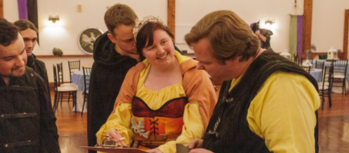

.png )
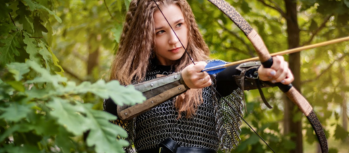



.png )
